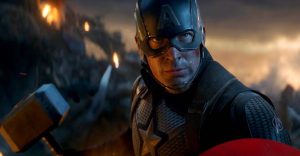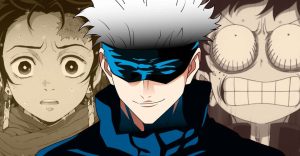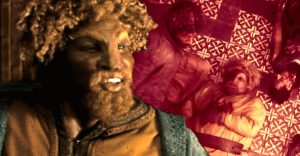Dune: 10 Scenes From The Book That Are Impossible To Adapt To Film

Denis Villeneuve’s mesmerizing adaptation of Frank Herbert’s Dune blew audiences away with its beautiful cinematography and impeccable casting, calling for other sci-fi novels to receive the same treatment. With this first installment covering the first half of the first book in the series, fans can’t wait to see what comes next.
However, anyone who’s read any of the books will understand the intricacy and philosophical elements that hold the entire series together. Some of these aspects, however important to the story, are just impossible to successfully adapt to film and do Herbert’s word justice.
The Gom Jabbar’s Pain Intensity

The Gom Jabbar is a staple of the first Dune book as a sinister introduction to the Bene Gesserit. Paul must undergo the Gom Jabbar test as a way to prove himself to be the prophesized Kwisatz Haderach, which involves unimaginable pain and death upon failure.
Villeneuve included this scene in his 2021 film, which was necessary considering its significance to the story, and it’s a pleasing scene to watch. However, putting just how painful this test proves an impossible task. An actor can adequately play someone in immense pain, but the audience can’t feel the moment like they can in the book.
Spice Orgy

The spice orgy is an infamous element of the Dune series because everything revolves around the spice melange. Coming from the Fremen’s Water of Life ritual, a Bene Gesserit extracts the poison and, once ingested, causes euphoric and psychedelic reactions. The book nods to sexual activity happening, hence the name.
Dune: Part Two will pick up shortly before this scene in the book after Lady Jessica becomes the Reverend Mother of the Fremen. While this would be a wild scene, it wouldn’t fit or appear accurate with typical LSD-like tripping components, and that part of the movie would make less sense than the book.
Ghola Duncan Idaho’s Memories Awakening

The book series of Dune spans thousands and thousands of years, but what most people don’t know is that Duncan Idaho, despite his death in the first book, is the only character to remain throughout the series and continues to dominate the major action sequences of Dune.
His death by the sinister Sardaukar isn’t the end for Duncan thanks to the Tleilaxu and their abilities to create gholas. Gholas are essentially clones but they will eventually have an “awakening” in which the memories of their past life, or lives in Duncan’s case, return. This epiphanic moment is impossible to capture on film.
Tleilaxu Women Cloning Spice From Their Bodies

Another handy thing that the Bene Tleilaxu are capable of is that they can clone spice-melange from their bodies. This is paramount to the premise of the story because the spice is what runs the galaxy, so it’s creating counterfeit money, but without the bulky equipment.
Needless to say, the process of the Bene Tleilaxu women’s bodies producing the spice would be impossible to adapt to film because it’s essentially a bodily function. While it’s a super cool concept to the plot, audiences are probably okay with not seeing that on the screen.
The Honored Matres’ Sex Drug

The Honored Matres don’t appear until the fifth book in the series, Heretics of Dune. They are an all-female matriarch of Bene Gesserit origin from The Scattering. Over the thousands of years that have passed, they developed a way to turn sex into a narcotic to control men.
Aside from the issues arising from how the movie would be rated if it included these scenes, the intensity of the so-called drug can’t be conveyed through a medium such as a film. Only in the book can fans begin to comprehend the power of this drug and its ability to control its users.
Paul’s Understanding Of His Prescient Dreams

The central philosophical argument of Dune is the concept of prescience and foreknowledge. Paul’s visions confuse him and he will later have a mental revelation of what they mean. His finally being able to begin interpreting his prescient dreams affects the entire course of the series.
Because viewers cannot see the thought process in a character’s head, without an inner monologue which Dune doesn’t have, this understanding of his prophetic origin can’t be adapted to the big screen. However, its significance to Paul’s journey is a must to incorporate in some way.
Alia’s Awareness From The Womb

After Paul and Lady Jessica join the Fremen, her pregnancy progresses. The Fremen’s Reverend Mother was dying, so Jessica had to take the Water of Life to preserve her memories. However, these memories were also then transferred to Alia, the baby in her womb.
Alia becomes a fully-conscious being before she’s even born, making her an Abomination. The concept of not only being completely aware of everything but also having all of the memories of the previous Reverend Mothers as a fetus and newborn baby is simply impossible to transmit to film.
Alia’s Combat Training

The second book in the series, Dune Messiah, features a peculiar and perhaps awkward scene in which Alia is doing combat training. She must do her exercises nude and Paul looks on in a kind of unsettling way as Herbert presents it.
Studios can’t include a scene of a young naked girl in their movie. Artistically speaking, this chapter in the book contains too much emotion that’s consequential to the tone of the scene and trying to convey that visually wouldn’t remain faithful to the novel.
The Ecological Transformation Of Arrakis

The planet of Arrakis underwent vast changes throughout the series. When first introduced, it’s a barren wasteland that’s earned its alternate name, Dune. As the series progresses to the reign of Leto II as the God-Emperor, Arrakis has experienced terraforming and foliage has flourished. However, the planet is irreparably destroyed by the end of the sixth book, Chapterhouse: Dune.
Presenting this ecological transformation may be doable in a television series given the incredible visual effects of Dune. However, for the construct of a movie, it’s an improbable element to depict.
Chairdogs

Perhaps one of the more ridiculous entities in the Dune universe and the chairdogs. Chairdogs are bio-engineered dog-like beings designed into the shape of a chair. They essentially act as automated massage chairs but without the computerized components, which are banned in Dune.
Putting these strange things into the films would not only confuse audiences unfamiliar with the book, but they would almost certainly look absurd. Even with the wonderful special effects used today, a chair that’s also a dog wouldn’t sit well.

















